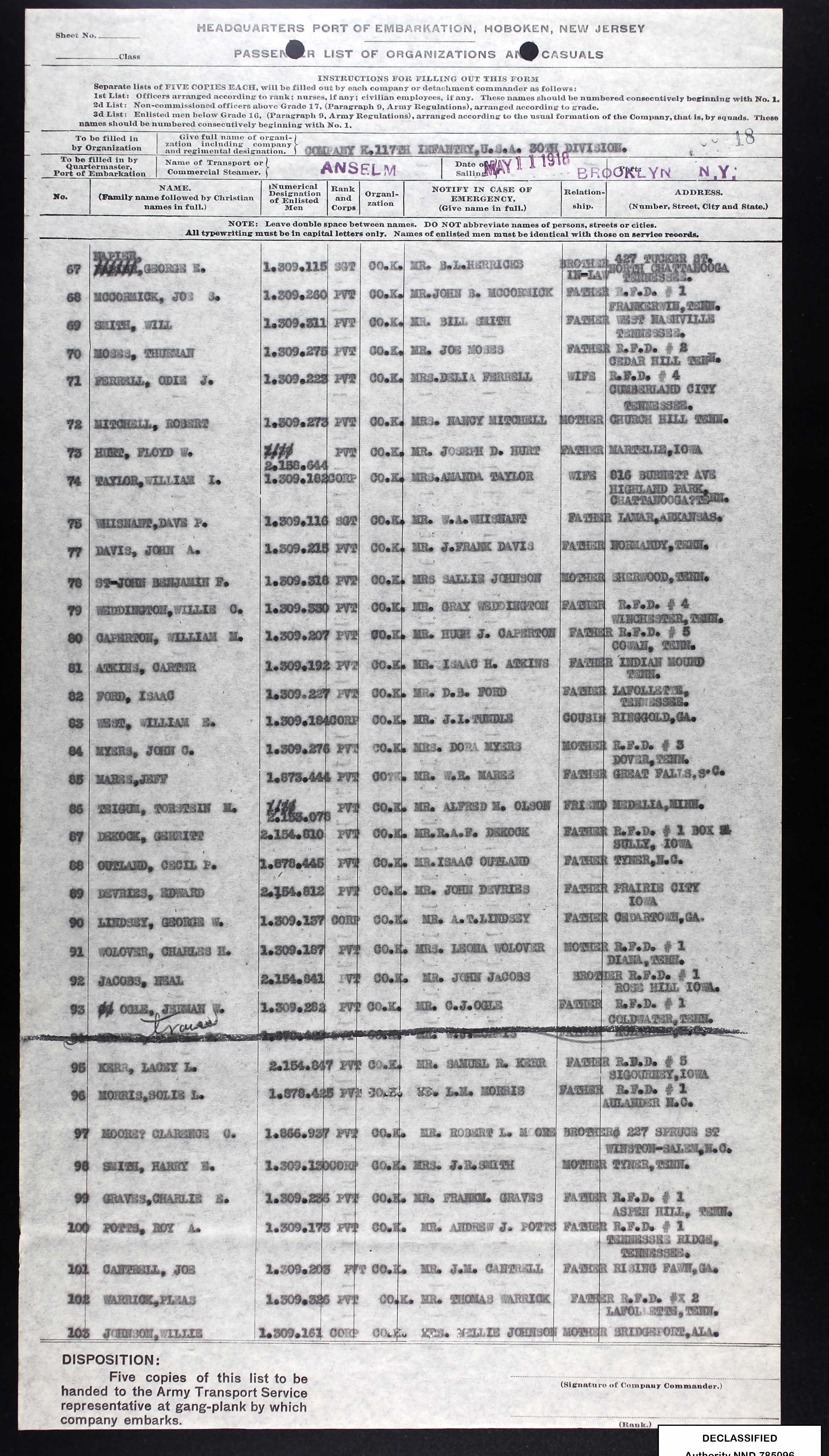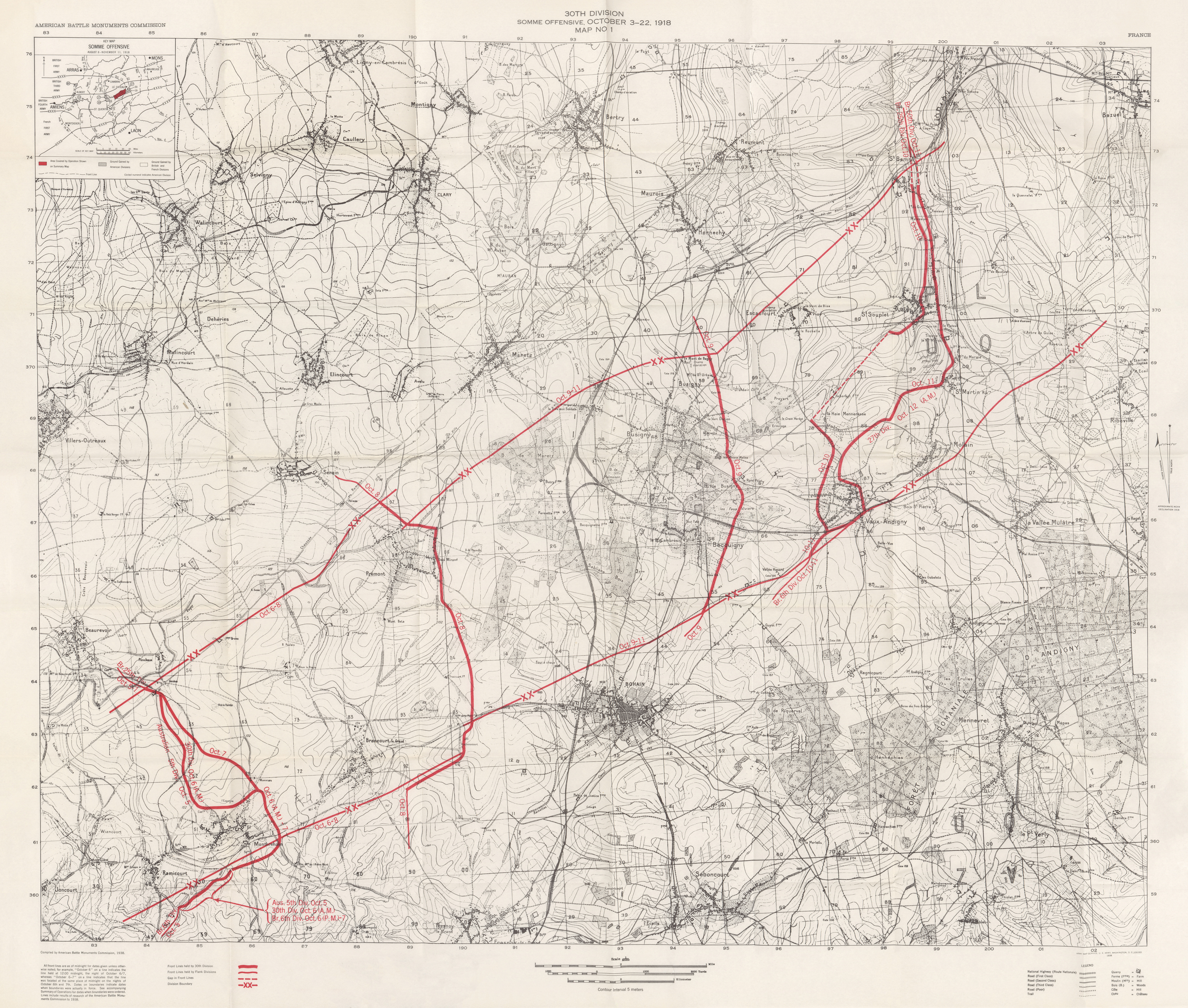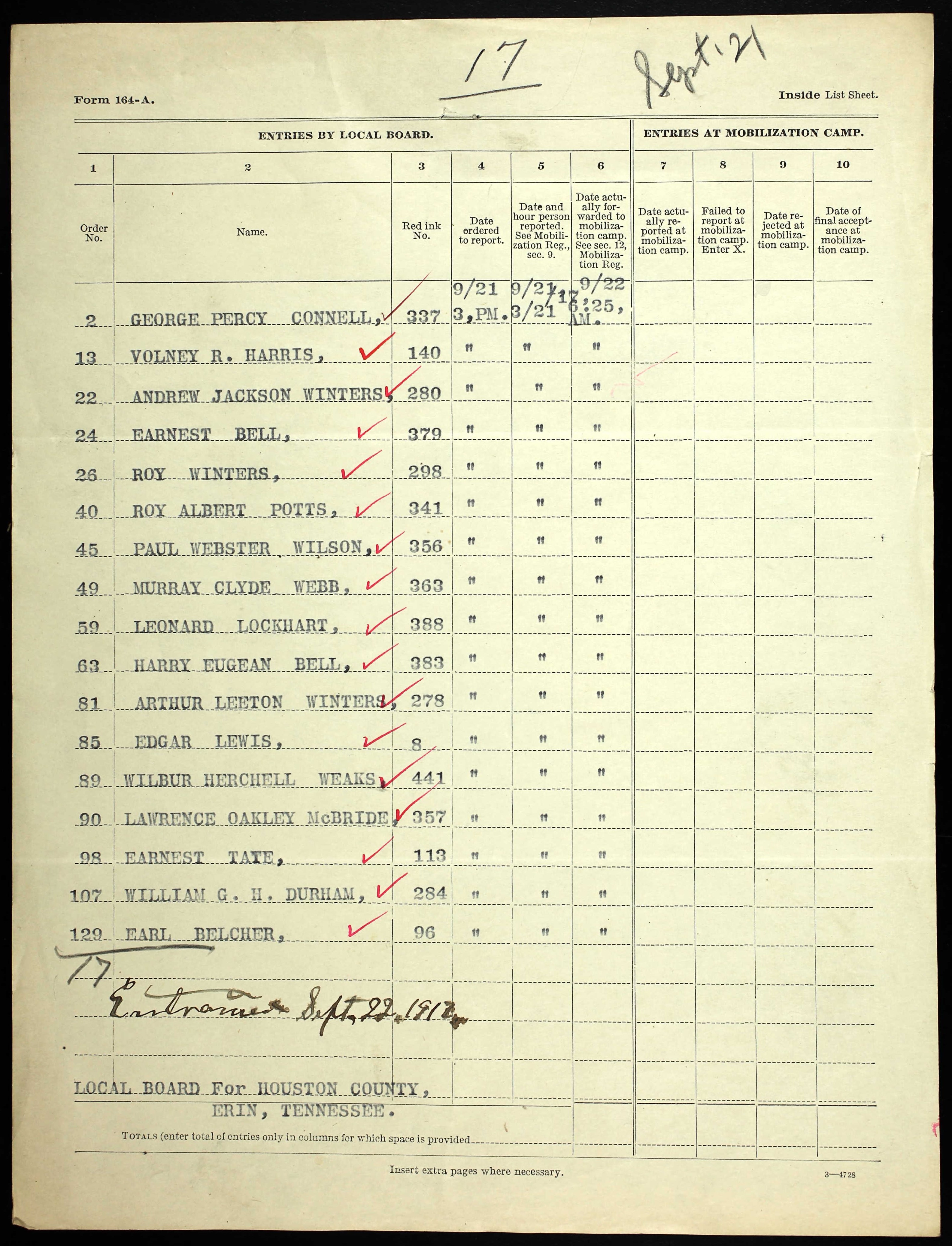“The injury that forced Uncle Roy into the field hospital was he was near the spot where a shell landed and was buried under dirt. He was rescued only because his hand was aboveground, and someone saw it moving and dug him out.”—Bruce Potts
For all the fuss over our ancestor Benjamin Franklin Potts, we mustn’t ignore his older brother Roy Albert. Not only did Uncle Roy precede Ben to Camp Gordon by nine months, he shipped to France in May 1918, fought in the Somme, was wounded in battle, and still didn’t get home until April the next year, a month before Ben’s homecoming.
Here, then, is the story of Roy Albert Potts. I regret its brevity and that I never knew Great Uncle Roy.
Induction and entrainment
At twenty-four, Roy Albert Potts was inducted into military service September 21, 1917, at the Houston County Courthouse. The next day, he entrained to Camp Gordon, Georgia, for basic training. He joined the Thirtieth Infantry Division in October at Camp Sevier, South Carolina. As a member of Company K, 117th Infantry Regiment, Roy Albert embarked, on May 11, aboard the Anselm, part of a convoy headed for Liverpool, England.
 Roy A. Potts (left column 100), Company K, 117th Infantry Regiment, 30th Division, aboard the Anselm from Brooklyn, New York, May 11, 1918
Roy A. Potts (left column 100), Company K, 117th Infantry Regiment, 30th Division, aboard the Anselm from Brooklyn, New York, May 11, 1918
In France, the Thirtieth Division fought under British command in the Somme Offensive. On October 6, the division relieved the Australian Fifth Division and took command of a sector that included the town of Montbrehain. In difficult fighting the previous day, the Australians had taken Montbrehain but left a salient on the division left.
 30th Division, Somme Offensive, October 3-22, 1918, American Battle Monuments Commision 1937
30th Division, Somme Offensive, October 3-22, 1918, American Battle Monuments Commision 1937
The British Fourth Army, under which the Thirtieth Division served, had issued orders for a general attack to begin October 8. To straighten the line of departure, the Thirtieth Division commander ordered the salient reduced in a preliminary operation the day before. The division’s 117th Regiment was in the line before the salient.
The American Battle Monuments Commission published a series of books in 1944, summarizing the operations of each division in World War I. In the volume concerning the Thirtieth Division, operations down to company level are noted. The following excerpt contains the only mentions of the 117th Infantry Regiment’s Company K, which was part of Third Battalion.
October 7, 1918, 5:15 a.m.—“The 3rd Battalion, 117th Infantry, attacked with Companies M, L and I in line from right to left, and Company K in close support. Company F was attached to the battalion as reserve. Strong resistance was encountered at once, but Company M gained its objective and established liaison with the 118th Infantry [on its right]. Companies L and I received heavy fire from the vicinity of Bois de la Palette, Genève and Ponchaux. The [friendly] artillery did not completely cover the left of the line and the British did not advance on that flank. Elements of the center reached the objective, but the left detachments made only a small gain. At 6:40 a.m. detachments of Company K were sent in to fill the gap which had developed between Companies L and I” (ABMC, 30th Division, 21-22).
Although Roy Albert could have been buried by the fallout from an artillery shell in fighting on any number of days before or after, the fight to reduce the salient is one in which we have a historical document noting Company K’s participation. Furthermore, according to statistics given by the American Battle Monuments Commission (10, 35), the 117th took a large proportion of their wounded casualties in the period October 3-14. This, plus the excerpt’s mention of heavy artillery on the left of the salient fight, makes October 7 a likely date for the incident.
After being pulled from an early grave, Roy Albert was taken to a field hospital. Sometime later, at Rembercourt, 125 miles to the southeast, Private Benjamin Franklin Potts received word that his brother Roy was killed in action.
A Very Muddy Place
WAR STORIES
An intimate account of a soldier’s experience in World War I, A Very Muddy Place takes us on a journey from a young man’s rural American hometown onto one of the great battlefields of France. We follow Private B. F. Potts with the 137th US Infantry Regiment through the first days of the Meuse-Argonne Offensive. We discover a personal story—touching, emotional, unforgettable.
In 1918, twenty-three-year-old Bennie Potts was drafted into the US Army to fight in the World War. He served with the American Expeditionary Force in France. At home after the war, he married and raised a family, and the war for his children and grandchildren became the anecdotes he told them.
A century later, a great grandson brings together his ancestor’s war stories and the historical record to follow Private Benjamin Franklin Potts from Tennessee to the Great War in France and back home again.
Available in hardcover, paperback, and e-book.
Disclosure: This page and linked pages contain affiliate links to Bookshop, Amazon, Apple, Barnes & Noble, and Kobo. As an affiliate of those retailers, Stephen earns a commission when you click through and make a purchase. Thank you for your support.


